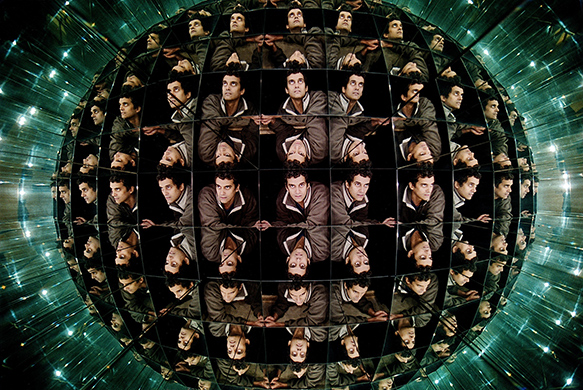Memories of a forgotten land
A 1970s rock and roll photographer turned video art pioneer in the 80s, Theo Eshetu, the grandson of a nobleman from the court of Emperor Haïlé Selassié, aka Ras Tafari, contributes to Caderno Sesc_Videobrasil 10: Uses of Memory with images and accounts that make up his personal portrait of Ethiopia. Born in London, United Kingdom in 1958, Theo Eshetu grew up between Africa and Europe. The cultural influence from the places he has been to comes through in his visual repertoire and his interest in civilizations, traditions, and rituals from different parts of the world.

Eshetu became familiar with pop culture in the 1970s, when he photographed artists of the likes David Bowie, Andy Warhol, Lindsay Kemp and The Velvet Underground, and was drawn to the metaphysical nature of electronic image. He started working with art and media in 1982 and was a pioneer in experimenting with the poetic and ritualistic possibilities of video. He challenged conventional genres by straddling different art languages, explored the boundaries that separate video art and documentary film, and the expressive potential of video in portrayals of African cultures, working outside the art mainstream of the time.
Theo Eshetu’s collaboration for Caderno Sesc_Videobrasil 10 is the result of a more personal inroad by the artist, the outcome of his trip to Ethiopia, where he spent part of his childhood, and to where he returned to pay tribute to his grandfather, Ato Tekle-Tsadik Mekouria (1913-2000). A historian and politician, Mekouria played a key role in the empire of Haïlé Selassié (1892-1975), born Tafari Makonnen and eternalized by the Rastafari Movement as Ras Tafari.
“I have often seen Ethiopia on television but for me it remains a place of the imagination. I have lived there as a child and now I am going back to visit my grandfather. (...) This is the fragmented record of a journey to the place where I lived from the age of one to five. I don’t have clear memories, but meeting my grandfather, a historian who was in the court of Haïlé Selassié, opened memories of this forgotten land," the artist writes. His memory retrieval, archival research, and video experimentation work gave rise to Blood is Not Fresh Water, from 1997, which in turn originated the photographic series BLOOD, from 2003, composed of video stills.
In Eshetu’s collaboration for Caderno 10, Blood. Of light and likeness, he combines personal accounts, memories and perceptions of Ethiopian history, culture and religiosity with 28 images culled from his BLOOD series.
Theo Eshetu has had his works exhibited at the 54th Venice Biennale (Italy), the 10th Sharjah Biennial (United Arab Emirates), Tate Britain (London, United Kingdom), the Stedelijk Museum (Amsterdam, Holland) and the New Museum (New York, USA), among others.